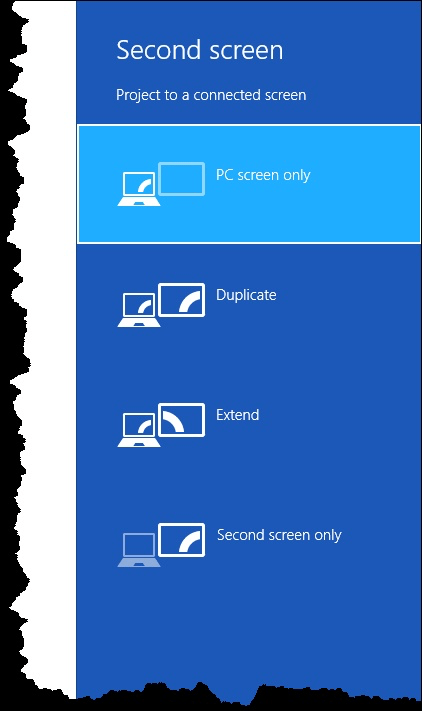When working on a desktop or using any Windows system out "in the wild," you may want to connect to an external screen. This screen can either be a second monitor or, perhaps, a projector you need for that critical presentation.
Windows makes it easy to hook up to an external screen and to control how that screen behaves relative to the main screen. After you've physically connected the second screen using whatever cable is appropriate to your computing device and the screen, simply press Win+P. You end up with a series of four choices displayed at the right side of your screen. (See Figure 1.)

Figure 1. Choices for working with a second screen.
Note that the four choices control how the second screen is used by Windows. You can choose to ignore the second screen, use only it, mirror (duplicate) the screens, or use the second screen as an extension of the first. In most cases you'll want to choose duplicate or extend.
After you click on the option you want to use, Windows starts using the device as you direct and you can go on working as you normally would with Windows.
![]()
![]() This tip (13077) applies to Windows 8 and 10.
This tip (13077) applies to Windows 8 and 10.
Bluetooth allows electronic devices to connect wirelessly. Discover how easy it is to connect a Bluetooth keyboard to ...
Discover MoreThis tip shows you how to use the command-line Powercfg utility to query a given power scheme from your current environment.
Discover MoreWindows allows you to define different power schemes that control how your computer uses power. This tip shows you how to ...
Discover MoreThere are currently no comments for this tip. (Be the first to leave your comment—just use the simple form above!)
Copyright © 2026 Sharon Parq Associates, Inc.
Comments